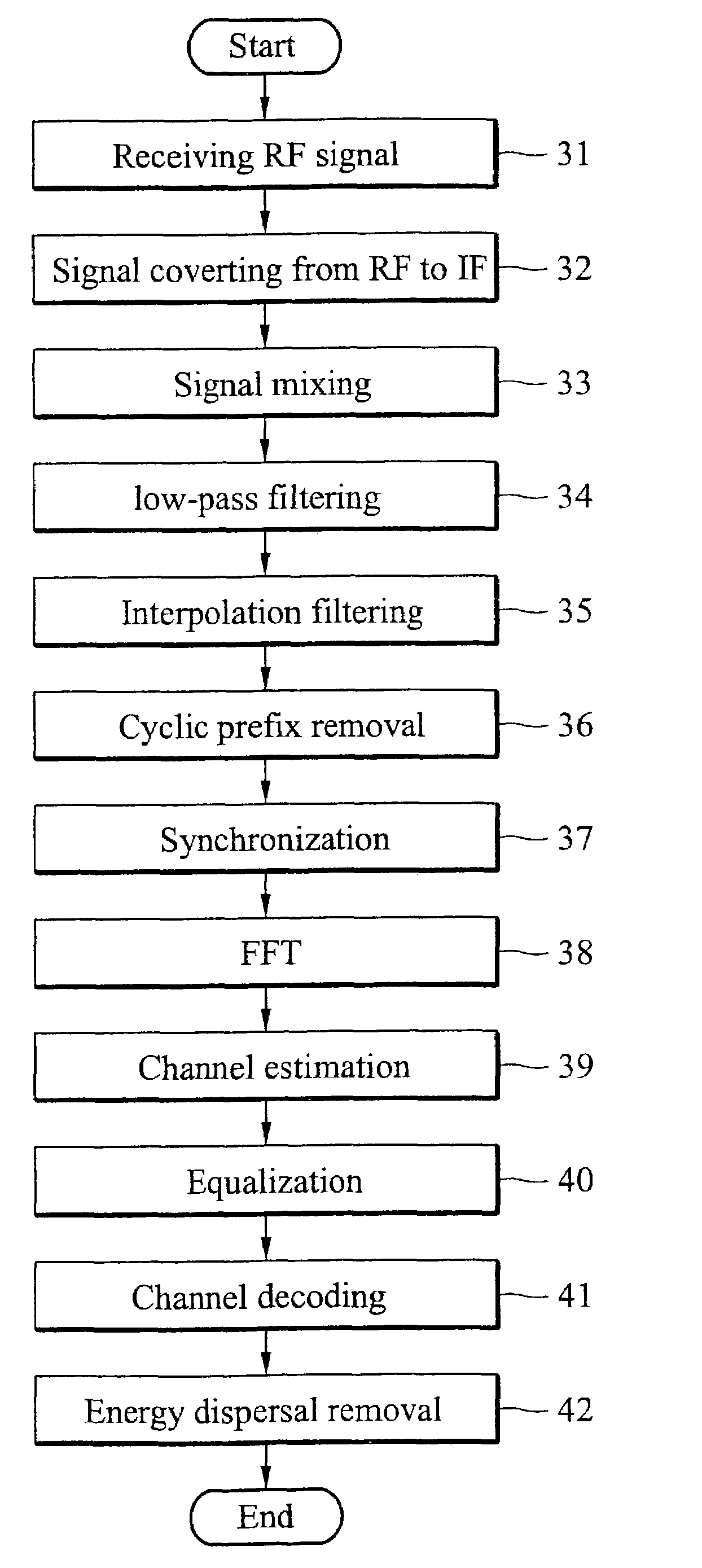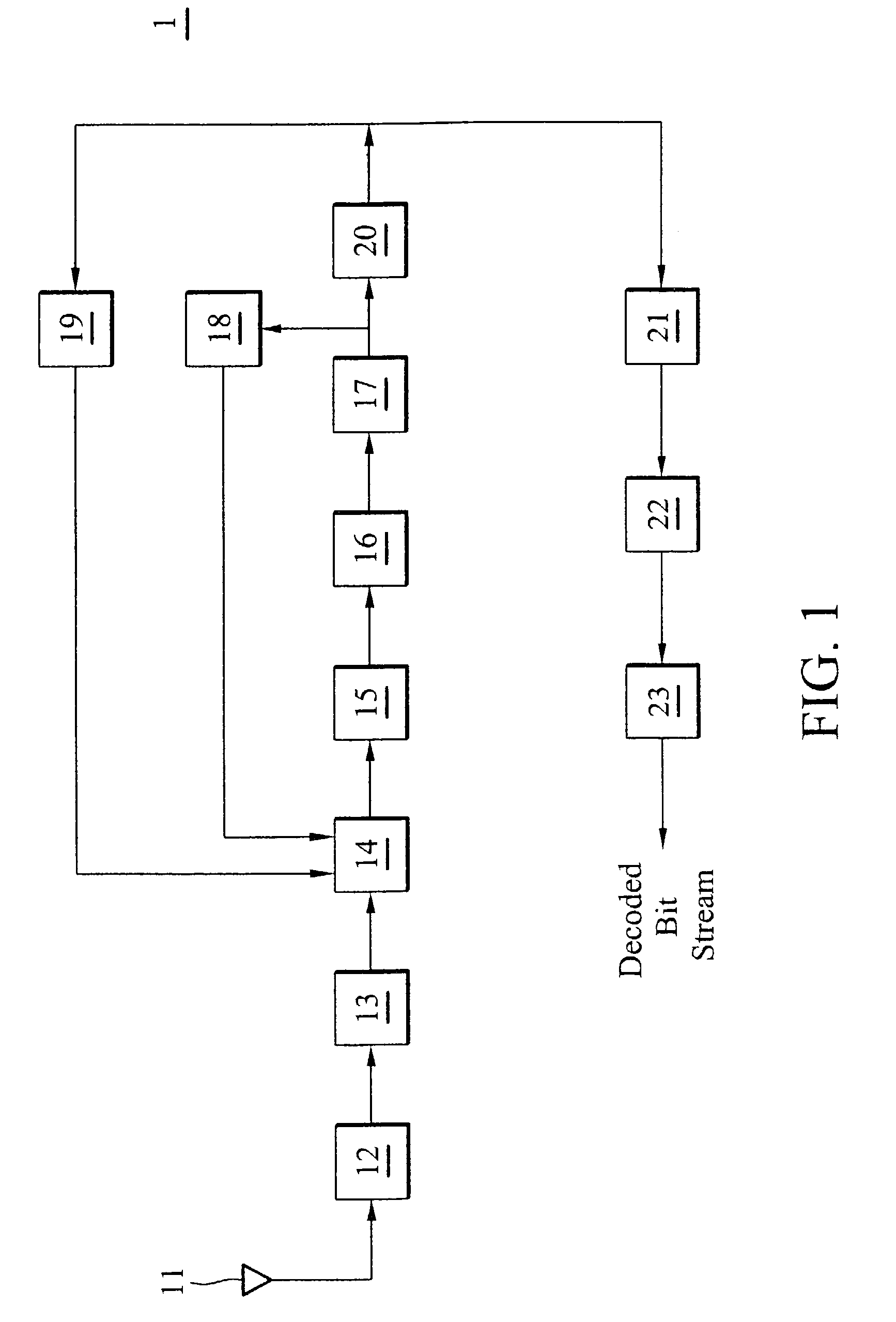Channel estimation in OFDM systems
- Summary
- Abstract
- Description
- Claims
- Application Information
AI Technical Summary
Benefits of technology
Problems solved by technology
Method used
Image
Examples
Embodiment Construction
[0059]FIG. 1 is a functional block diagram of an OFDM receiver according to one embodiment of the invention. The OFDM receiver 1 includes an antenna 11, RF tuner 12, A / D converter 13, digital mixer 14, low-pass filter 15, interpolation filter 16, cyclic prefix remover 17, coarse synchronizer 18, fine synchronizer 19, FFT processor 20, channel estimator and equalizer 21, channel decoder 22 and energy dispersal removing circuit 23. The OFDM receiver 1 outputs a decoded bit stream of the OFDM signal.
[0060]The antenna 11 receives a radio frequency (RF) signal from an OFDM transmitter (not shown). The RF signal received by the antenna 11 is an OFDM modulated signal carrying OFDM symbols. The OFDM receiver 1 performs a receiving process for the OFDM symbols. The OFDM symbols are, for example, a synchronous symbol, a delay time estimating symbol, a channel frequency response calculating symbol (pilots), and a data symbol.
[0061]The RF tuner 12 converts the received RF input signal in freque...
PUM
 Login to View More
Login to View More Abstract
Description
Claims
Application Information
 Login to View More
Login to View More - R&D
- Intellectual Property
- Life Sciences
- Materials
- Tech Scout
- Unparalleled Data Quality
- Higher Quality Content
- 60% Fewer Hallucinations
Browse by: Latest US Patents, China's latest patents, Technical Efficacy Thesaurus, Application Domain, Technology Topic, Popular Technical Reports.
© 2025 PatSnap. All rights reserved.Legal|Privacy policy|Modern Slavery Act Transparency Statement|Sitemap|About US| Contact US: help@patsnap.com



